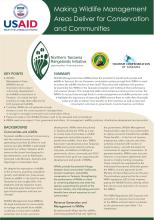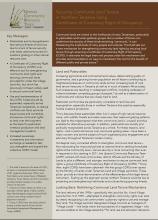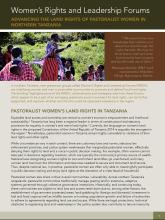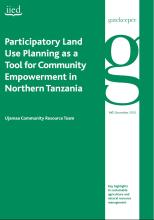Land Library
Welcome to the Land Portal Library. Explore our vast collection of open-access resources (over 74,000) including reports, journal articles, research papers, peer-reviewed publications, legal documents, videos and much more.
/ library resources
Showing items 1 through 9 of 11.Wildlife Management Areas (WMAs) have the potential to benefit both people and wildlife in Tanzania. But are Tanzanian communities earning enough from WMAs to want to protect the wildlife that live on their land?
This is a desk appraisal of the Alliances for Religions and Conservations (ARC) done for the Norwegian Agency for Development Cooperation (Norad) by the Department of International Environment and Development Studies, Noragric, at the Norwegian University of Life Sciences (NMBU).
Communal lands are central to the livelihoods of many Tanzanians, particularly to pastoralists and hunter-gatherer groups. But a number of factors can undermine the security of these lands remaining ‘communal,’ in turn threatening the livelihoods of many people and cultures.
In northern Tanzania, new grassroots groups called Women’s Rights and Leadership Forums (WRLFs) are mobilizing women and men in pastoralist communities to promote and defend local land rights.
Land degradation is a serious problem in Sub-Saharan Africa, where up to two-thirds of the productive land area is reported to be degraded to some extent. Local communities suffer the most from the degradation of their land and they are therefore fundamental to the widespread adoption of su
This paper presents several case studies to show how the Ujamaa Community Resource Team (UCRT) has been working within Tanzania’s legal and policy framework to support a diverse range of pastoralists, agro-pastoralists and hunter-gatherers, all of whom face fundamental threats from external appro
In the face of trends towards a widening “food gap” and general poverty, this paper attempts to address the problem by discussing the methodologies necessary for sustainable land management to ensure improved food security, rapid economic development and poverty reduction in developing countries
Drylands have potential for economic activity now markets are emerging for natural products such as aloe or gum Arabic. However it is difficult to take advantage of these opportunities because there is a lack of structure for this market.
This report contributes to the aim of the International Union of Soil Sciences to put sustainable land management higher on the global agenda.





